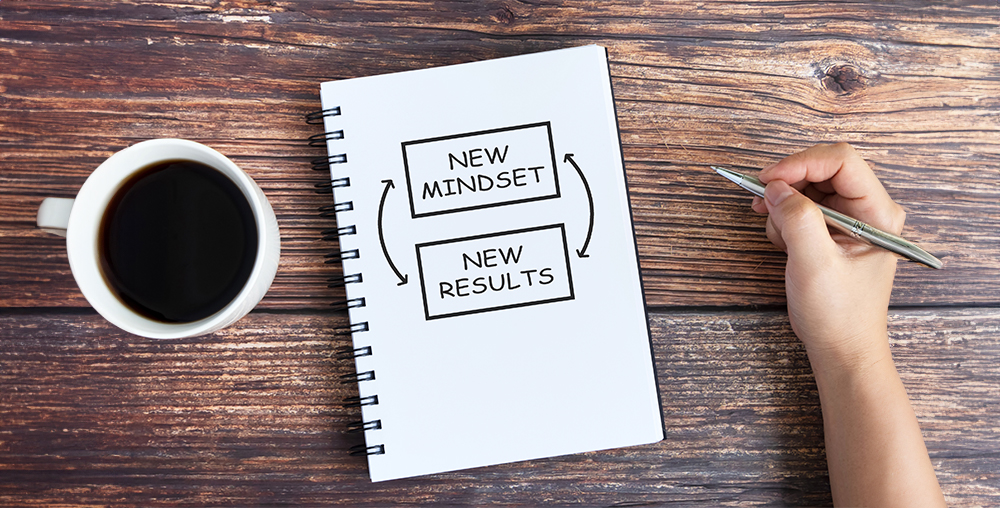
By Jon A. Kaupla, President and Executive Director Wisconsin School of Business Center for Professional & Executive Development
Earlier in my career, when I was a new leader, my boss told me I wasn’t thinking strategically enough. Unfortunately, he didn’t share tips or knowledge about how I could think strategically. So, I sought knowledge from others, read books and articles, and observed senior leaders at the company. I quickly picked up some key points that I still leverage today.
Anticipate Versus React
At its highest level, a strategic mindset requires shifting your thinking to a more systematic and proactive approach to problem-solving and decision-making. You need to think beyond the immediate, day-to-day operations of your role and consider the broader context of the role.
The Harvard Business Review describes strategic thinking this way: “Strategic people create connections between ideas, plans, and people that others fail to see.”
A key skill is envisioning the future and anticipating potential outcomes. Those with a strong strategic mindset take a proactive stance, analyze trends, and project future scenarios. Fostering this strategic mindset enables you to formulate plans and allocate resources effectively.
It is also important to keep abreast of emerging trends (particularly in your field and industry), technological advancements, and competitive threats. I found subscribing to industry newsletters, following best in class companies in our industry, and networking with respected leaders in my field to be effective in staying up to date.
I attended meetings and conferences frequently and stayed connected with respected peers who moved on to other larger organizations in our industry. It was an investment of time and money, but the investment paid off as I was able to demonstrate to company leaders my ability to think strategically and add value.
Creativity and Innovation
Data and analysis serve as a foundation to apply creative thinking to generate new and unconventional ideas. Here are a few of my “go-to” creative thinking exercises:
- Set a timer – set a timer for five to 10 minutes and punch out as many ideas or solutions as possible.
- Daily ideas – come up with 10 original ideas every day. The ideas don’t need to be used; you just need to think of them!
- Switch things up – do your creative thinking in a new place with new scenery. Switch up your monotonous routine.
- Use a new lens – set a two-minute timer to come up with a list of other ideas for current things, routines, etc.
- Take a reading break – if you’re feeling stuck, take a break and read.
- Write – try setting a 10-minute timer and write. Don’t worry about it making sense…just write.
If you are more extraverted, try traditional brainstorming activities with peers, friends, and family. It is amazing what creative ideas can be generated by those outside of your company or industry.
Holistic Perspective
I have found a strategic mindset can be developed by adopting a holistic perspective that considers diverse factors and stakeholders. Instead of viewing issues from your perspective only, assess the broader ecosystem and how your decision may impact that larger system.
This perspective can also foster collaboration with different functions and departments, leading to stronger trust and partnerships.
Ask Powerful Questions
By asking what I refer to as “powerful questions,” you can build your strategic mindset. Powerful questions are not questions you normally hear. Powerful questions make you think strategically and generate original ideas.
Powerful questions also force you to be vulnerable – the space where we learn the most and can stretch into the impossible.
Here are some of my favorite powerful questions:
- How will we tell this story three years from now?
- If we’re saying “yes” to this, to what are we saying “no?”
- What would success look like? What would success feel like?
- What’s missing from this picture so far? What is it we’re not seeing? What do we need more clarity about?
- What are the most important big questions we need to answer?
Reflection and Introspection
Make time in your day for strategic thinking. Like most leaders, my typical workday was packed with meetings. I didn’t have any space to build my strategic thinking “muscle.” I needed to establish a routine and discipline to dedicate time to develop my strategic mindset.
For me, dedicating time at the beginning of the day works best. I love mornings – they remind me of new beginnings and foster fresh ideas. I also found it helpful to journal during this strategic thinking time. What was I learning? What new ideas were brewing? What emerging trends was I aware of?
Take the Next Step
Developing a strategic mindset isn’t a professional aspiration but a crucial skill for navigating today’s complex business environment. Strategic thinking requires a proactive approach, informed by anticipation rather than reaction.
In addition to these individual approaches to develop your strategic thinking, consider outside resources such as professional development programs or one-on-one coaching. Pursing development opportunities to enhance your strategic thinking helps you make better decisions, solve problems effectively, become a stronger leader, and adapt to changes in the business world. This gives you an advantage and makes your work more satisfying.

Jon Kaupla is the executive director of the Wisconsin School of Business Center for Professional and Executive Development. He has over 18 years of human resources experience with organizations ranging from non-profits to Fortune 500 companies. Jon has led human resources strategy in the healthcare, financial services, marketing, and retail industries. Jon has a Bachelor of Science in psychology and social work from Florida State University and a Master of Arts in education from Alverno College.